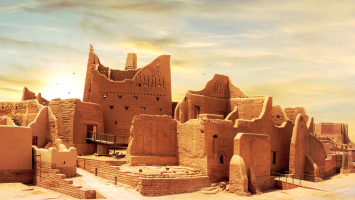Top 7 Most Beautiful Historical Sites in Tuvalu
If you wish to learn about Tuvalu's wonderful past, there are a variety of historical landmarks in Tuvalu that you may visit. These include time-honored ... read more...buildings, palaces, and parks. The presence of these Tuvalu monuments will take you on a journey through the city's rich past. Here is a list of most beautiful historical sites in Tuvalu!
-
Fongafale is the biggest of Tuvalu's Funafuti islets. It is a 12-kilometer-long, 10-to-400-metre-wide strip of land, with the South Pacific Ocean and reef to the east and the protected lagoon to the west. The Tengako peninsula lies in the north, and Funafuti International Airport extends from northeast to southwest on the island's widest point, with the hamlet and administrative center of Vaiaku on the lagoon side.
On Fongafale, the Funafuti Kaupule is in charge of approving the construction of dwellings or expansions to existing buildings on private land, while the Areas Management Committee is in charge of lands leased by the government.
Funafuti was in the path of Cyclone Bebe in 1972. Cyclone Bebe destroyed 90% of the buildings and trees on Fongafale. The storm surge formed a wall of coral rubble roughly 10 miles (16 km) long and 10 feet (3.0 m) to 20 feet (6.1 m) deep at the bottom along the ocean side of Fongafale and Funafala.
Location: Funafuti atoll, Tuvalu
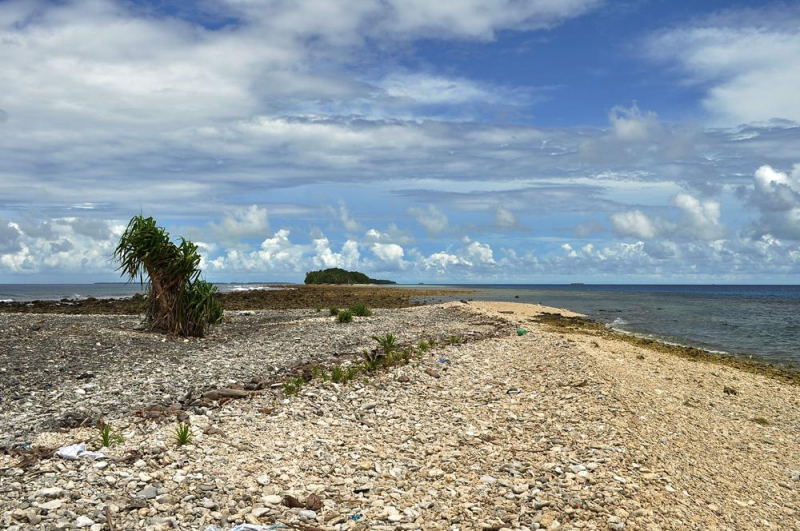
Photo: Tuvalu Odyssey 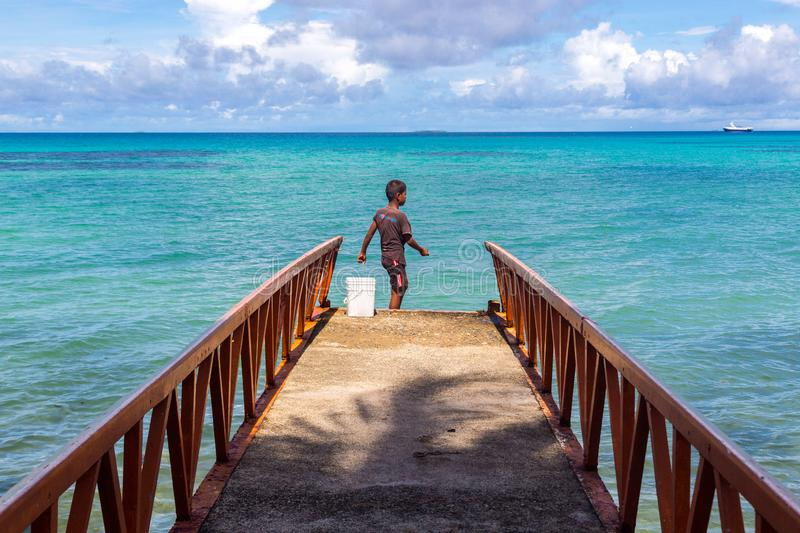
Photo: Dreamstime -
The nation of Tuvalu's biggest atoll is Vaitupu. It's at 7.48 degrees south and 178.83 degrees east. There are 1,061 inhabitants (2017 Census) residing on 5.6 square kilometers (2.2 square miles), with Asau serving as the principal settlement. The island's 5.6 square kilometers (2 square miles) comprise wetlands, mangroves, a bordering coral reef, and a big lagoon.
It is uncertain when Vaitupu's initial settlement occurred. According to oral tradition, the Vaitupuan village was founded by Telematua, a Samoan who arrived in the 16th or 17th century. Tongans may have arrived to the atoll for the first time in the mid-13th century. Throughout its history, Vaitupu has maintained ties with Tonga, both amicable (alliances through marriage) and hostile (visits by Tongan slave-seekers). Vaitupu was also visited by I-Kiribati, therefore it was not isolated. Vaitupu translates as "water fountain."
According to Vaitupuan legend, fate favored their efforts when a ship dispatched to collect the last payment sunk, as did the second ship, the trade schooner Vaitupulemele. The majority of the money had been gathered by the time a third ship arrived. The trading schooner Vaitupulemele, on the other hand, appears to play a different part in Vaitupu's history. The debt that was owed to Ruge & Co went beyond the purchase of items on credit to include the Vaitupulemele purchase price by the Vaitupu Company. T.M. Williams was the Ruge agent at the time, but he later founded the Vaitupu Company with the Vaitupuan community and bought the Vaitupulemele from Ruge & Co. However, the schooner was destroyed on a trip from Samoa, and Williams died shortly after, leaving no accounting for copra transported from Vaitupu. In any case, the Vaitupuans paid the whole amount sought by Ruge & Co, despite the fact that that firm shortly went bankrupt.
Location: Hihifo District
Photo: Addflag 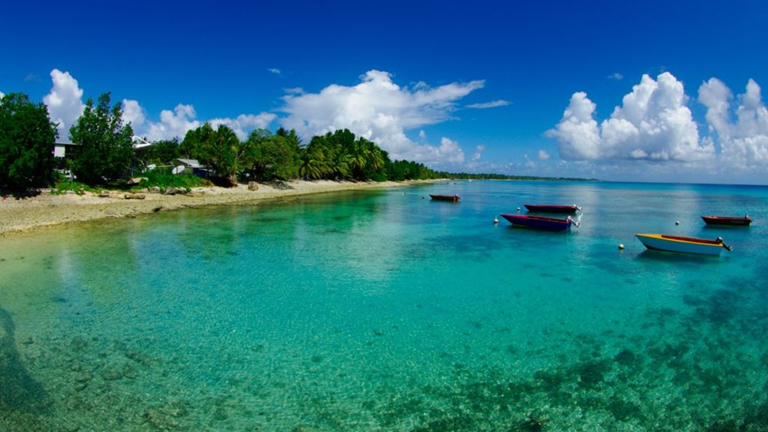
Photo: Flightsoaustralia.co.uk -
Nanumanga is a reef island and a district of Tuvalu, an Oceanian island republic. It has a population of 491 people and a surface area of around 3 km2 (2017 Census). It one of the most beautiful historical sites in Tuvalu.
A French government mission led by Captain Louis Isidore Duperrey of the frigate La Coquille saw Nanumaga on May 9, 1824. Between 1860 and 1900, the population of Nanumaga was estimated to be between 300 and 335 persons. From early April 1880 until the trading-station was devastated by a storm later that year, Louis Becke, who subsequently became a writer, was the resident trader for the Liverpool business of John S. de Wolf & Co. on Nanumaga. Becke went on to write The Rangers of the Tia Kau, which details a shark assault on the Tia Kau reef between Nanumea and Nanumaga.
When Pacific researchers discovered the submerged Caves of Nanumanga in 1986, they claimed to have unearthed the remnants of fire made by prehistoric humans.
Location: Oceanian island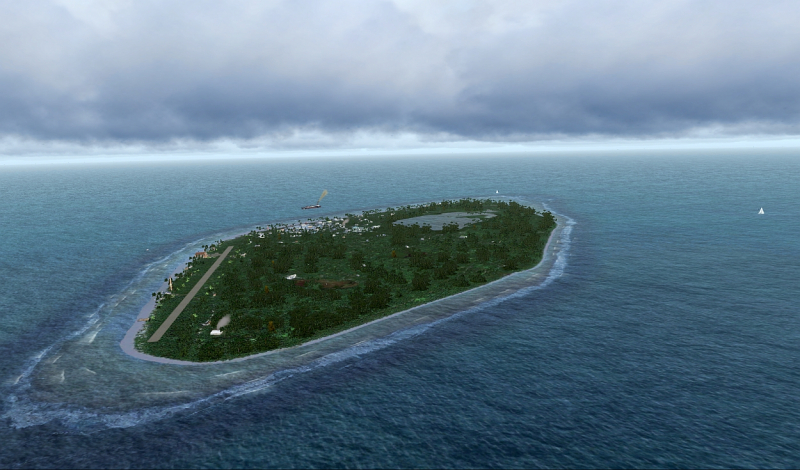
Photo: Simflight 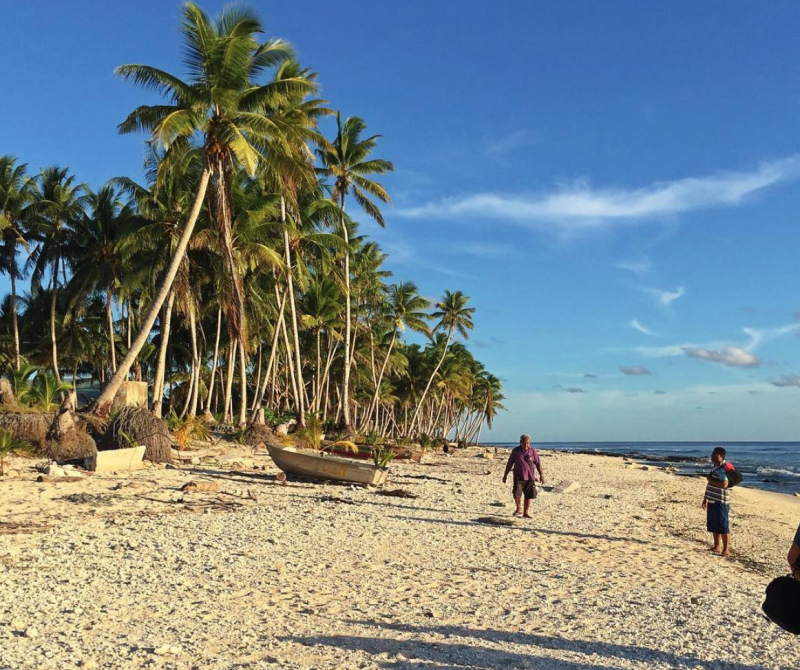
Photo: Big 7 Travel -
Tepuka is an island located eighteen kilometers west of Fongafale, northwest of Funafuti, the major atoll of Tuvalu. The tree Hernandia peltata is known as Te puka or Pouka. Tepuka is to the north of the Funafuti Conservation Area, which includes 33 square kilometers (12.74 square miles) of reef, lagoon, and six motu (islets) to the south of Tepuka: Fualopa, Fuafatu, Vasafua, Fuagea (also known as Fuakea), and Tefala.
On the island, there is a well-preserved underground bunker that was an American communications station erected during the Pacific War and connected to the military airstrip on Fongafale.
The island is situated between the smaller islet of Tepuka Vili Vili in the southwest, Te Afualiku in the northeast, the Pacific Ocean on the west, and the Funafuti lagoon of Te Namo on the east. The island has degraded significantly in recent years. Te Ava Tepuka and Te Avua Sari are two adjacent channels that go through Funafuti atoll in the northeast, connecting the islets of Te Afualiku to the northeast and Tepuka to the southwest.
Location: northwest of Funafuti
Video: hors frontieres 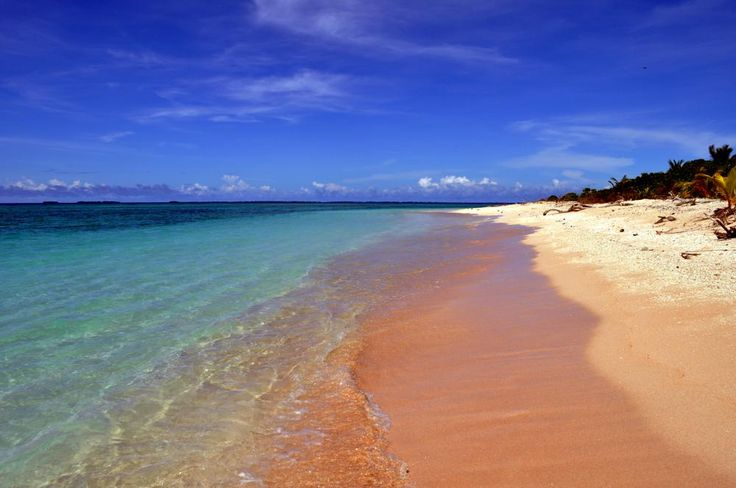
Photo: Pinterest -
Niutao is a reef island in Tuvalu's northwestern region. It is one of Tuvalu's nine districts (islands). It is also one of three districts with only one island, excluding the three islets inside the confined lagoon. Niutao has a population of 582 people (2017 census).
Niutaoans think their forefathers arrived in Samoa in the 12th or 13th centuries. Tonga warriors were defeated in a fight on the reef of Niutao known as Tga A Kaupapa in the 15th century. Tongan forces raided Niutao again later in the 15th century, but were repulsed. A third invasion of Tongan warriors occurred in the late 16th century, followed by a fourth when the Tongans were defeated at Tekamaitoga.
On two instances in the 17th century, warriors from the Kiribati islands invaded. These fights took place on the reef, with the I-Kiribati fighting at Tuteatua and the Niutaoan warriors fighting at Agaia; the sacred site known as Teititapalua marks the location of these engagements. Fighting broke out in Niutao in the late 17th century between rival chiefs, with adherents of the vanquished leaders being pushed from the island and permitted to settle on Nanumea.
Location: northern of Tuvalu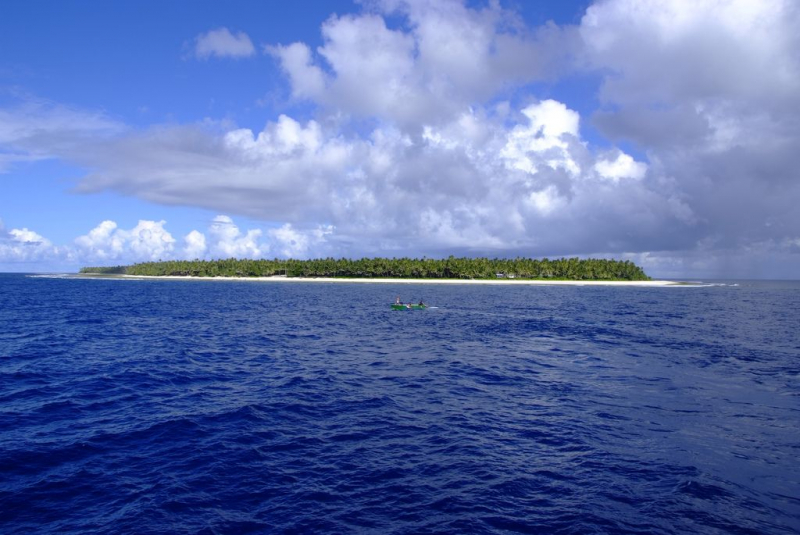
Photo: Pinterest 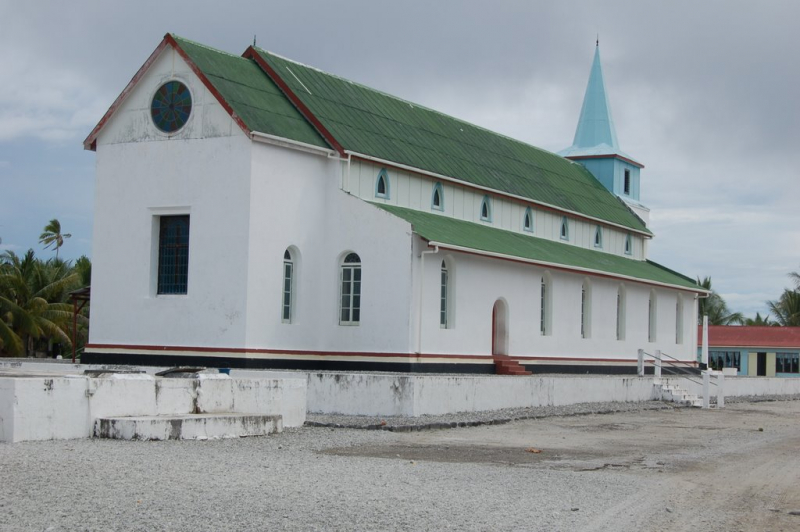
Photo: Mapio.net -
Niulakita is Tuvalu's southernmost island, as well as the name of the island's lone community. Niulakita is home to 34 people (2017 Census). Niulakita inhabitants have relocated to the island from Niutao. Niulakita is represented in Tuvalu's Parliament by members of the Niutao constituency.
The discovery of Niulakita is attributed to visitors from Nui, headed by Kaunatu, who was returning people to Vaitupu when their canoe veered off course to the south and landed in Niulakita. On the islands, the only plants were saltbrush (Atriplex) and pukavai trees (Pisonia grandis). One of the passengers, Kaeula, passed away and was buried with the last of their coconuts planted at the head of his tomb. Kaunatu named the island after a location on Nui with the same name.
Niulakita was first seen by Europeans on August 29, 1595, when the Spanish navigator Alvaro de Mendaa visited it on his second journey. La Solitaria was the name given to the island. Two small vessels attempted to find a port in its southern half, but the bottom was uneven and rocky, so they abandoned their efforts.
Location: southern of Tuvalu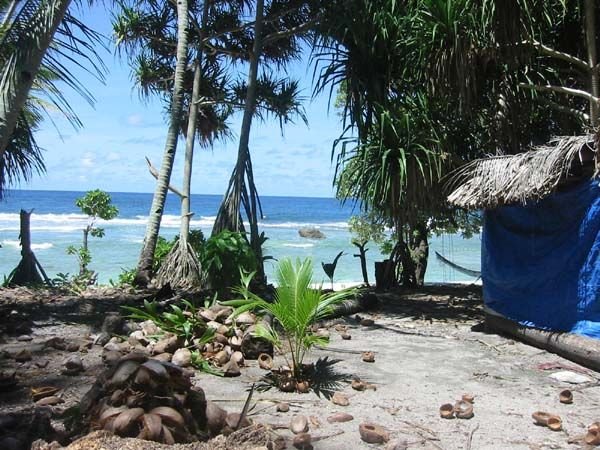
Photo: Pinterest 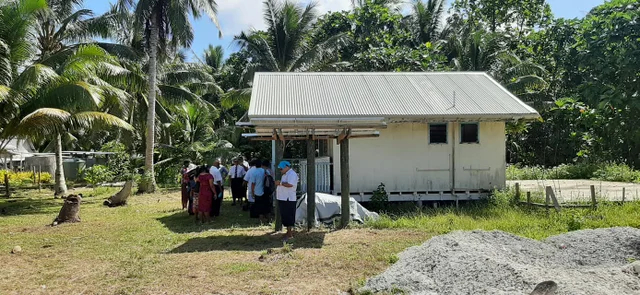
Photo: Reddit -
Ranked 7th in the list of most beautiful historical sites in Tuvalu is Funafala. Funafala is an islet off the coast of Funafuti, Tuvalu, inhabited by five residents and home to a church. Funafala translates to 'the pandanus of Funa,' the name of a chief for whom the tribe was named Funafuti.
During the Pacific War, the bulk of Tuvaluans on Fongafale atoll relocated to Funafala, leaving Fongafale as a base for American soldiers who seized much of Fongafale atoll, including the construction of the airstrip. For the rest of the war, the hospital was relocated to Funafala atoll.
A Cyclone hit Funafuti in 1883, according to George Westbrook, a trader on the island. He was the only resident in Fongafale at the time of the Cyclone because Tema, the Samoan missionary, had transported everyone else to Funafala to work on erecting a church. The chapel and the commerce businesses of George Westbrook and Alfred Restieaux on Fongafale were demolished. Funafala had suffered little damage, so the villagers returned to Fongafale to rebuild.
Location: Funafuti
Video: Simon Kofe 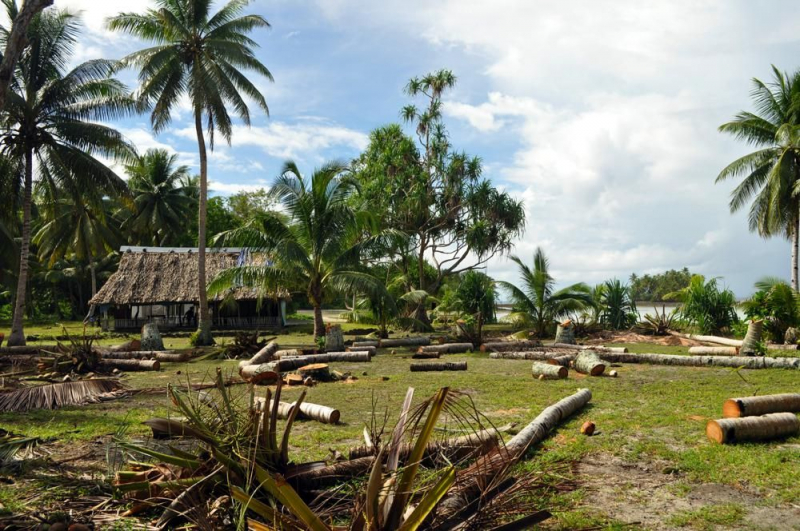
Photo: Pinterest



























